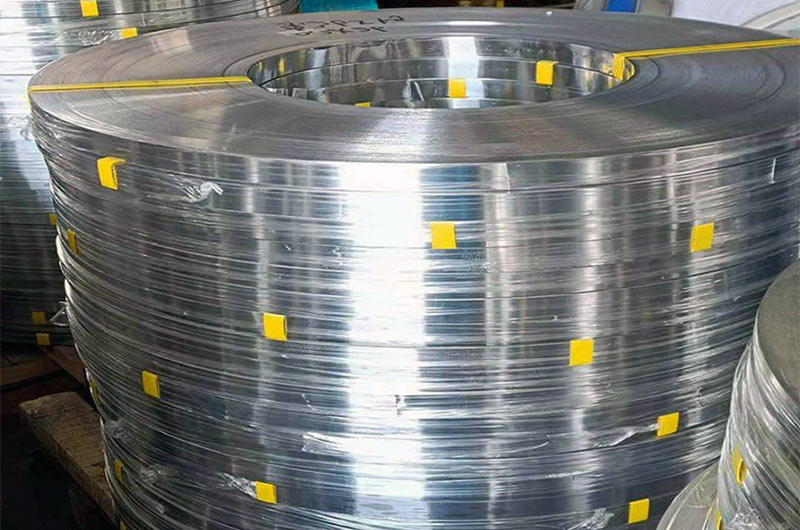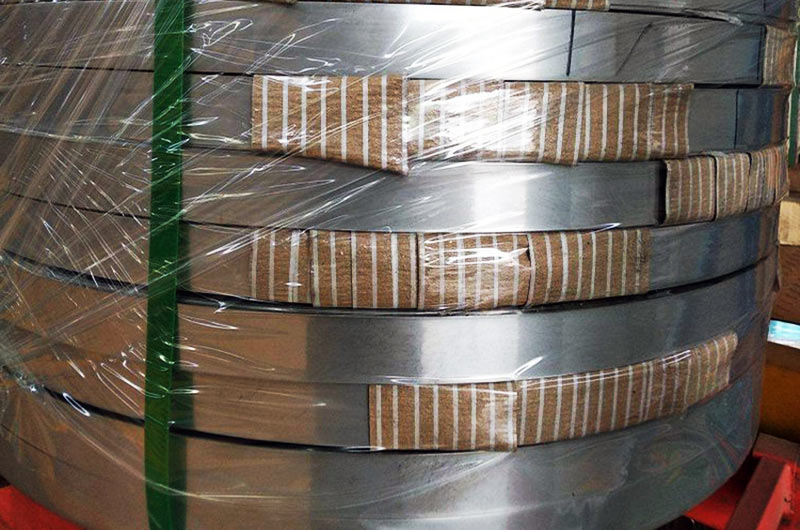- Introduction to 2024 Aluminum Strip
- Why Choose 2024 Aluminum Strip
- 2024 Aluminum Strip Typical Temperature
- 2024 Aluminum Strip Commonly Used Thickness
- 2024 Aluminum Strip Common Applications and Specifications
- Equivalent 2024 Aluminum Strips for Specific Applications
- Challenges and Considerations During Use
- Conclusion
Introduction to 2024 Aluminum Strip
2024 aluminum strip belongs to the 2000 series of aluminum alloys, known for its high strength-to-weight ratio and excellent fatigue resistance. It contains copper as its primary alloying element, contributing to its strength.
Additionally, small amounts of manganese and traces of other elements enhance the overall performance of 2024 aluminum. This alloy is commonly used in aerospace applications and structural components where strength and fatigue resistance are critical.

Why Choose 2024 Aluminum Strip
1. High Strength
2024 aluminum strip is celebrated for its exceptional strength, making it a preferred choice in applications where structural integrity is crucial. Its high tensile strength is retained at elevated temperatures.
2. Lightweight
Despite its high strength, 2024 aluminum is relatively lightweight. This combination of strength and low density is especially valuable in aerospace applications, where weight savings are paramount.
3. Excellent Fatigue Resistance
2024 aluminum exhibits excellent fatigue resistance, making it suitable for components subjected to repetitive stress cycles. This property is particularly advantageous in aerospace and other high-performance applications.
4. Formability and Processability
2024 aluminum demonstrates good formability, allowing for various fabrication processes such as bending, forging, and machining. This versatility in processing makes it adaptable to a range of manufacturing methods.
5. Corrosion Resistance
While not as corrosion-resistant as some other aluminum alloys, 2024 aluminum does offer reasonable resistance to corrosion. However, it is generally recommended for use in applications where corrosion is not the primary concern.
2024 Aluminum Strip Typical Temperature
2024 aluminum performs well at elevated temperatures, maintaining its mechanical properties even in high-temperature environments. This characteristic is advantageous in applications that involve exposure to heat.
Applications Corresponding to Each Temper’s 2024 Aluminum Strip:
2024 T3 Aluminum Strip
Applications: Aircraft structural components, fuselage and wing structures, and other aerospace components requiring high strength.
Characteristics: Good formability and high strength.
2024 T4 Aluminum Strip
Applications: Automotive components, precision-machined parts, and structural components.
Characteristics: Solution heat treated and naturally aged for improved formability.
2024 T6 Aluminum Strip
Applications: High-stress structural components in aerospace, military aircraft, and critical parts in machinery.
Characteristics: Solution heat treated and artificially aged for maximum strength.
2024 T351 Aluminum Strip
Applications: Critical aerospace components, such as wing and fuselage structures.
Characteristics: Solution heat treated, stress relieved, and stretched for improved stability.

2024 Aluminum Strip Commonly Used Thickness
Thickness tables for 2024 aluminum strip may vary depending on the specific application and manufacturing requirements. However, common thicknesses range from 0.15mm to 6.35mm.
2024 Aluminum Strip Common Applications and Specifications
2024 Aluminum Strip for Aerospace Components (T3 and T6)
Specifications: AMS-QQ-A-200/3, AMS 4037, ASTM B209
Examples: Wing skins, fuselage frames, and structural components in military and commercial aircraft.
2024 Aluminum Strip for Automotive Components (T4)
Specifications: ASTM B209, AMS 4037
Examples: Precision-machined parts, automotive structural components, and components requiring high strength-to-weight ratio.
2024 Aluminum Strip for Machined Parts (T4 and T6)
Specifications: AMS 4037, ASTM B209
Examples: Precision-machined components in various industries, including aerospace, defense, and machinery.
2024 Aluminum Strip for Structural Components (T351)
Specifications: AMS 4120, AMS 4339, ASTM B209
Examples: Critical structural parts in aerospace applications, including wing and fuselage structures.
2024 Aluminum Strip for High-Stress Applications (T6):
Specifications: AMS-QQ-A-250/4, AMS 4037, ASTM B209
Examples: Components subjected to high-stress conditions, such as structural elements in military hardware.

Equivalent 2024 Aluminum Strips for Specific Applications
7075 Aluminum Strip
Where 2024 is used for its high strength, 7075 can be considered as an alternative with even higher strength levels. It is often used in similar aerospace applications.
6061 Aluminum Strip
For applications where corrosion resistance is more critical than the highest strength, 6061 aluminum can be an alternative. It is commonly used in marine and structural applications.
2014 Aluminum Strip
In situations where machinability is a priority, 2014 aluminum may be considered. It is known for its excellent machinability but may have slightly lower strength compared to 2024.
Challenges and Considerations During Use
1. Corrosion Sensitivity
While 2024 aluminum has reasonable corrosion resistance, it is not as corrosion-resistant as some other aluminum alloys. Care should be taken in applications where exposure to corrosive environments is a concern.
2. Heat Treatment Sensitivity
Proper heat treatment is crucial to achieving the desired mechanical properties in 2024 aluminum. Deviating from recommended heat treatment processes may affect its performance.
3. Weldability
2024 aluminum is generally considered less weldable compared to other alloys. Specialized welding techniques and filler materials may be required for successful welding.
4. Selective Applications
Due to its specific properties, 2024 aluminum is best suited for applications where a high strength-to-weight ratio and fatigue resistance are paramount. It may not be the optimal choice for applications prioritizing corrosion resistance.
5. Cost Considerations
The cost of 2024 aluminum, particularly in its fully heat-treated and high-strength states, can be relatively higher compared to some other aluminum alloys. Cost considerations should be weighed against the specific performance requirements of the application.
Conclusion
In conclusion, the choice of 2024 aluminum strip depends on the specific requirements of the application, considering factors such as strength, weight, formability, and environmental conditions.
While it excels in aerospace and high-performance applications, users should be mindful of its characteristics, proper heat treatment, and potential challenges, ensuring optimal performance in their chosen applications.
